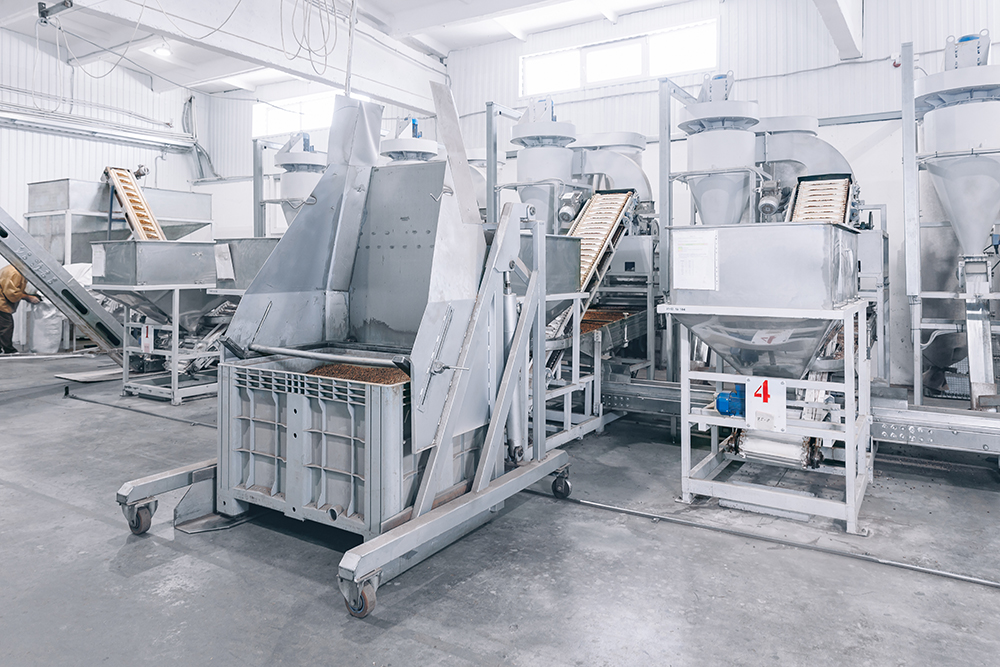Food and beverage facilities have many rules they must follow in order to keep everything safe and sanitary. Rules have been established by the FDA and USDA to help ensure the highest levels of food safety possible. The rules cover all of the aspects of operating and maintaining a food and beverage facility in a safe, sanitary manner, including the need for floor drainage.
Drainage is an important factor in the process of food and beverage handling, and it is also a critical safety issue.. Read on to discover the importance of drainage, why disinfecting is essential, and how to properly disinfect drains.
THE IMPORTANCE OF DRAINAGE

Sanitation is essential in food and beverage facilities. Keeping drains clean can be a full-time job, with the various messes that can occur throughout the day. Without proper management, harmful bacteria growth and contamination can be introduced throughout the facility.
Floor drainage is a critical part of preventing these issues. Drains move standing water away from the ground's surface, through the drainage channel, toward an appropriate management outlet. By eliminating standing water, you minimize the risk of bacteria growth, contamination, and odors. Eliminating standing water will also allow the floors to dry faster so that they do not become a safety hazard for employees.
WHY YOU NEED TO DISINFECT DRAINS
The drains in food and beverage facilities have to withstand a lot of residual food debris. It is critical that you clean and disinfect them regularly, just as you would the rest of your facility. When you take the time to disinfect these systems, you expand the lifespan of the drain. You will also prevent the potential build-up of residue, which can lead to foul odors and clogging. Take the time to do a thorough job.
HOW TO DISINFECT A DRAIN

Knowing how to disinfect a drain properly ensures the system's longevity. Using the wrong tools or chemicals can damage the drain, especially if it is not a corrosion-resistant model.
Follow these steps for safe and effective drain disinfecting:
1. Run cold water through the drain for 15 seconds without soap or chemicals.
2. Pour one or two cups of chlorine bleach slowly around the edges of the drain. It is important to wear gloves, protective clothing, and eyewear in case the bleach splashes, as it can cause eye damage and skin irritation and can ruin clothing.
4. Let the bleach sit for about ten minutes, but not any longer, to avoid damage to the drain.
5. Finish by flushing the system with hot water for two minutes.
EASIER DRAIN CLEANING WITH FOODSAFE DRAINS

Choosing the right drainage system can make drain care easier. While you still need to know how to disinfect the drains, systems from FoodSafe Drains can make the process easier and less hands-on for workers.
FoodSafe Drains offers two systems, the Slot Drain, and the Trench Drain, which both have a T304 or T316 stainless steel channel.
The FoodSafe Trench Drain is the bigger of the two systems, and it is capable of handling large amounts of wastewater and solids without becoming clogged. The round-bottom and V-shaped bottom models use a design meant to trap the least amount of bacteria and they are both available in 6" and 12" widths.
They are both forklift-rated and come with tamper-proof grates that ensure only certain people can access the interior of the drain. It is compatible with the FoodSafe Catch Basin, which can catch debris and small objects to prevent them from continuing down the channel.
The 10,000 Series FoodSafe Slot Drain is the other option for food and beverage facilities. Unlike the Trench Drain, the largest width of the Slot Drain is 1 1/4" wide. Despite the smaller width, the system's flow rate can reach 27 GPM per foot of drain. The small channel opening eliminates the need for a grate, which allows easier access to the drain for cleaning. The FoodSafe Slot Drain is also forklift-rated and has a radius-edge design to prevent trapping bacteria. It is also compatible with the FoodSafe Catch Basin.
The FoodSafe Trench Drain and Slot Drain are both compatible with the company's clean-in-place (CIP) technology. CIP allows for automated cleaning and sanitation, which cuts down on time, prevents workers from using the wrong amount of cleaning solutions, and makes it easier to sanitize systems more frequently.
PREVENT CONTAMINATION BY DISINFECTING DRAINS

Drainage plays a vital role in the functioning of food and beverage facilities. Without effective drainage, the risk of bacteria growth and contamination can increase significantly. Improper maintenance can harm your facility, even if you have a drainage system. Taking the time to regularly disinfect your drain will keep it clean and free from odors and harmful bacteria and will prolong the system's lifespan.
FIND THE BEST DRAINS FOR YOUR APPLICATION WITH FOODSAFE DRAINS
Having the right drainage system can make disinfecting it significantly easier. Contact FoodSafe Drains today to learn about our options and how our CIP technology can make them even better.


